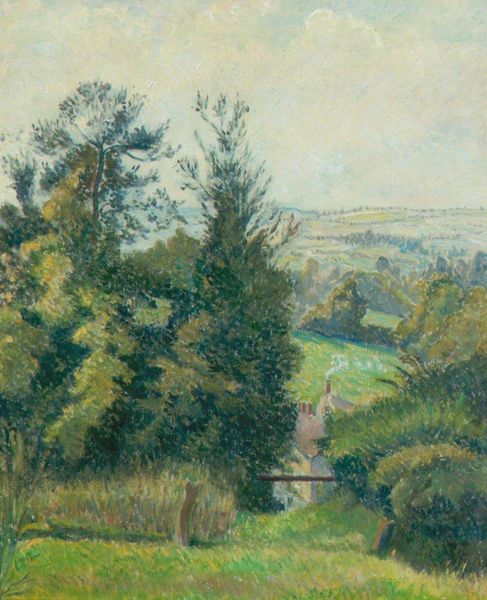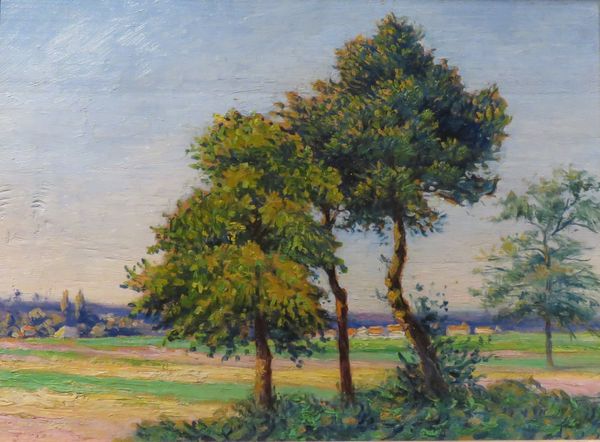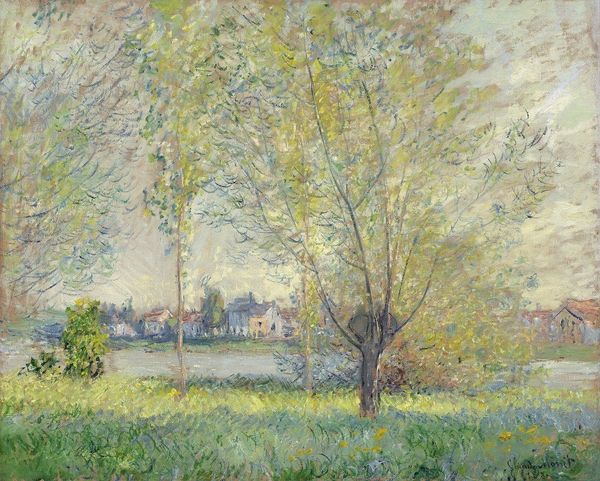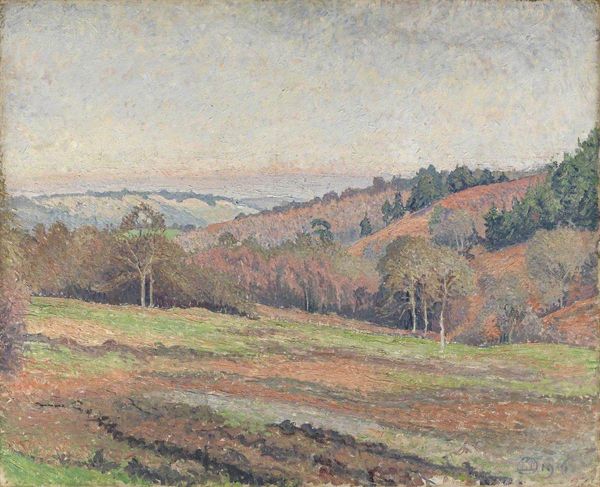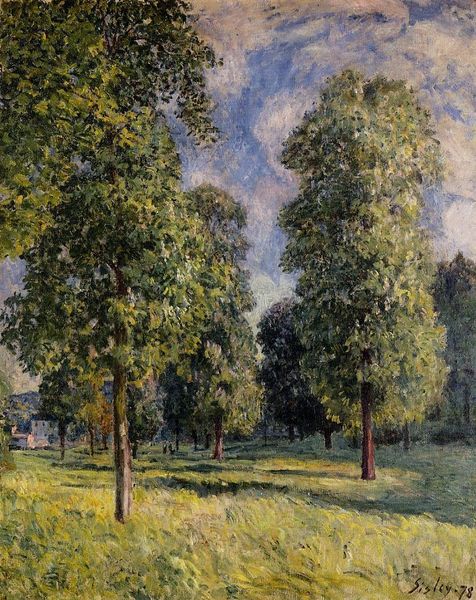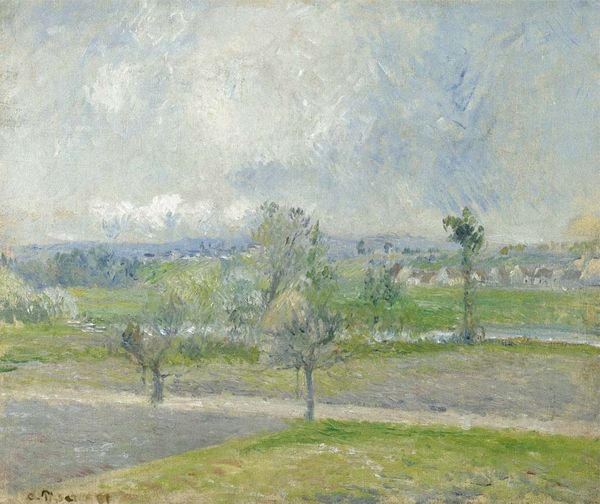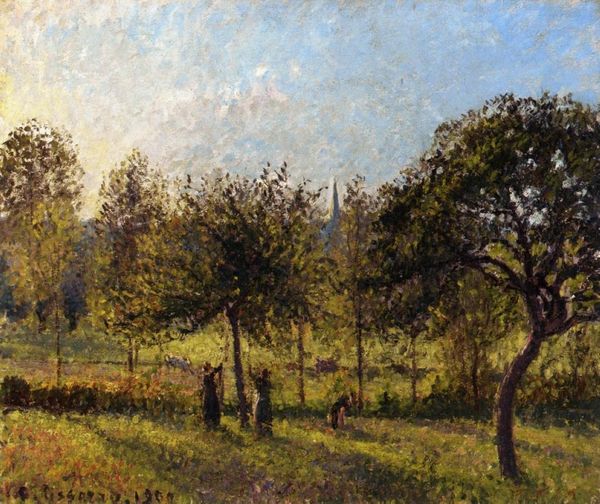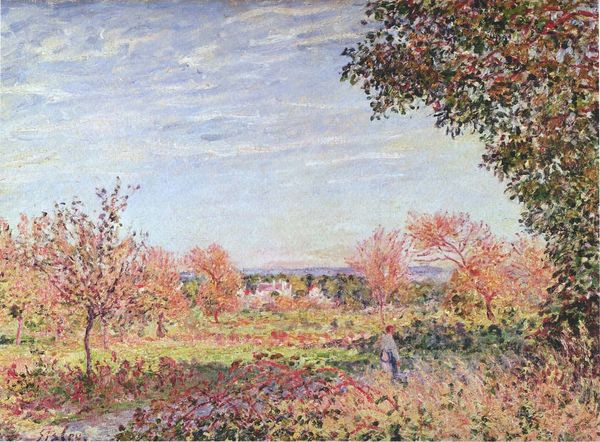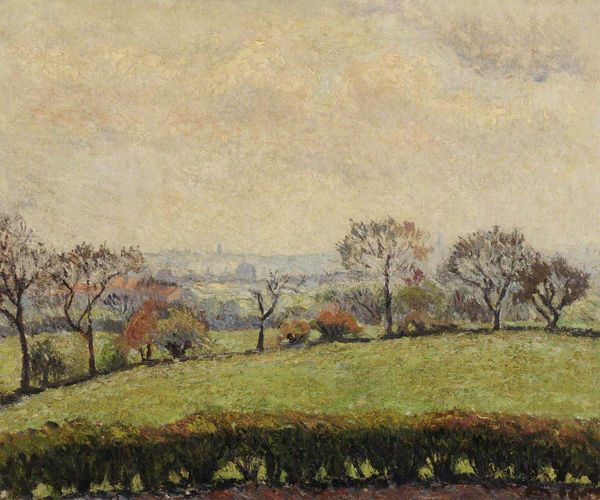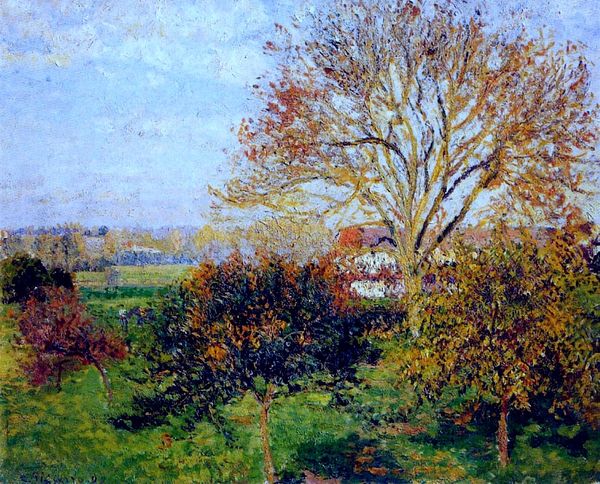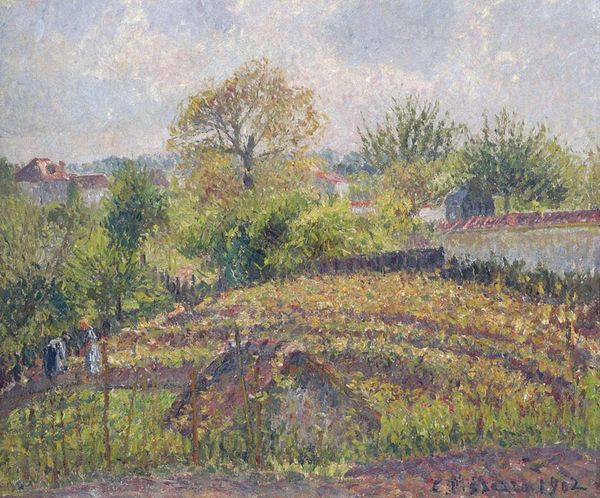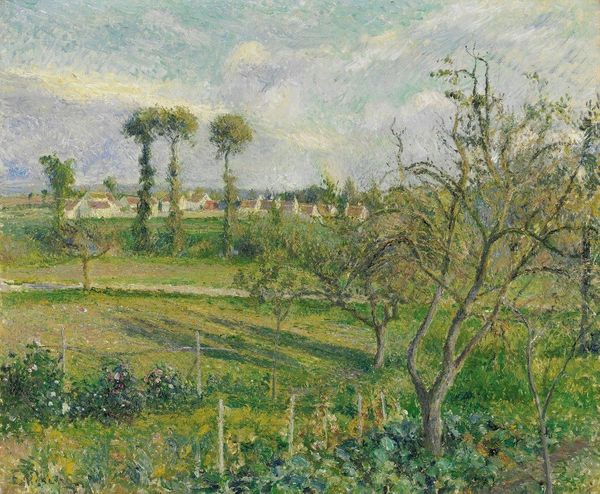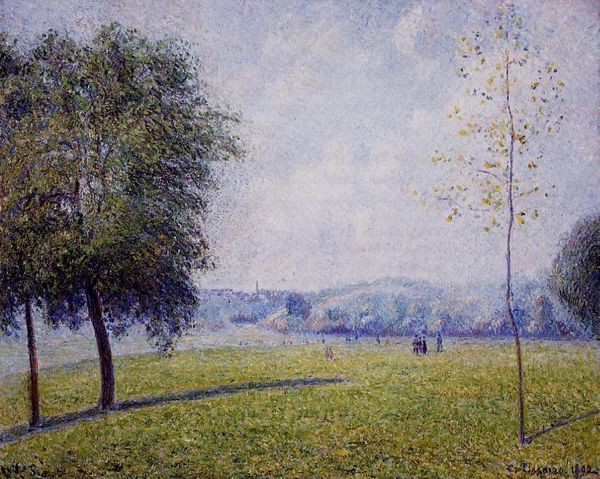
plein-air, oil-paint
#
impressionism
#
plein-air
#
oil-paint
#
landscape
#
impressionist landscape
#
nature
#
oil painting
#
post-impressionism
#
naturalism
Copyright: Public Domain: Artvee
Editor: So, this is Camille Pissarro’s "Prairie à Éragny," created in 1886 using oil paint. There's something really peaceful about it, maybe even a little bit melancholic. It seems so simple but complex when you look closely at the composition. What do you see in this piece, looking at it from your perspective? Curator: Its success hinges on its surface treatment and structural arrangement. Note the methodical brushstrokes, carefully placed to construct the visual space. Pissarro is employing a quasi-scientific method. Notice how the paint application contributes to a sense of depth and airiness despite its density? Editor: Definitely. The way the different colours interact creates this vibrancy without feeling overwhelming, even though the hues themselves are quite muted. It's like, each brushstroke is a conscious decision. Curator: Precisely. It showcases a sophisticated awareness of colour theory. Ask yourself, how do these textural fields contribute to the structural logic of the work? It's not just representational, is it? Editor: Not at all! It seems more about how Pissarro builds up this world, colour by colour. I am now seeing how the texture interacts to establish structure rather than describe a scene. Curator: An excellent observation. These techniques challenge our perception and draw attention to the material construction of the artwork. Editor: I never thought about Impressionism this way. I’m more aware of how important it is to carefully look at brushstrokes, layers, and hues, to analyze composition. Thank you for this close inspection. Curator: A keen eye unveils not only what is seen, but how it's constructed, and how that construction shapes the visual experience itself.
Comments
No comments
Be the first to comment and join the conversation on the ultimate creative platform.
